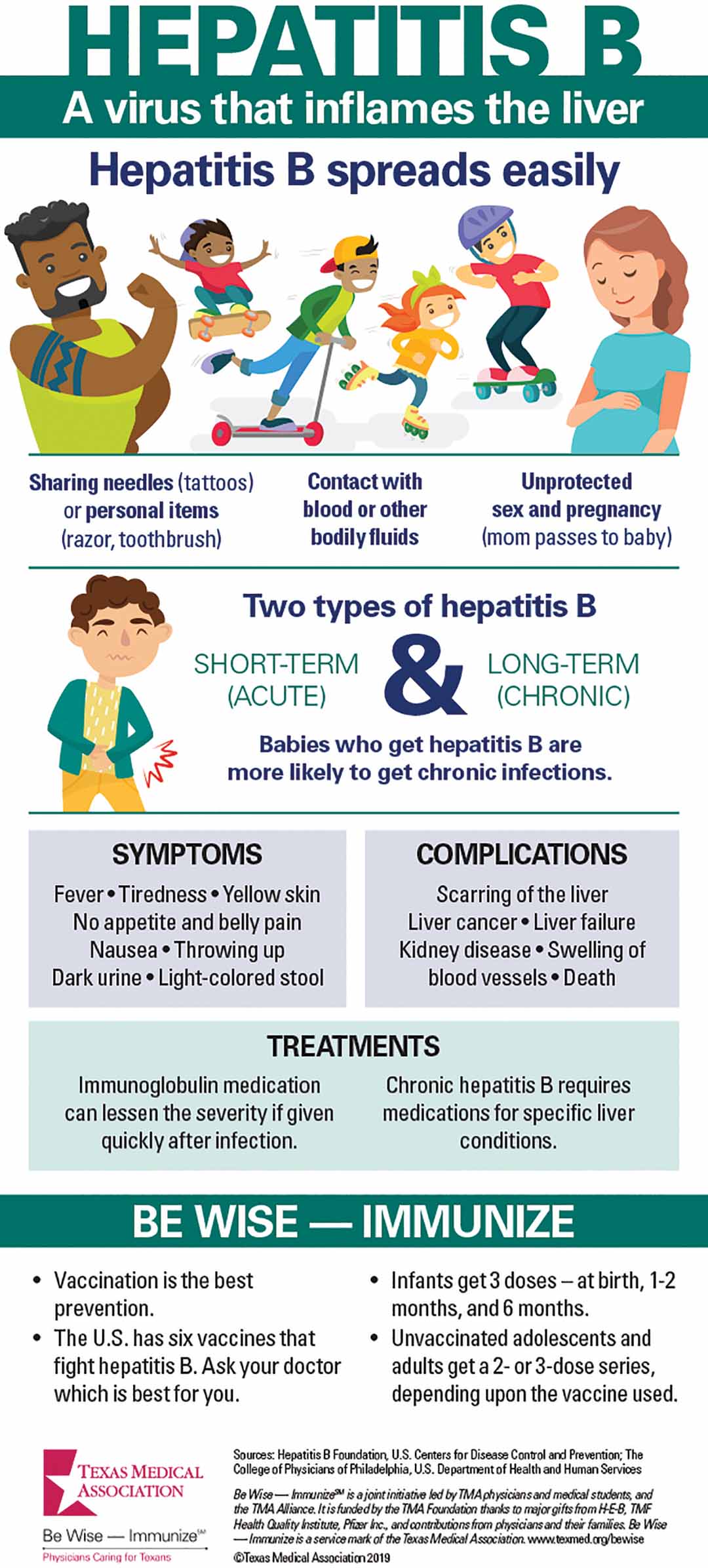There are six different vaccines for hepatitis B in the United States, so there’s no shortage of tools to prevent it. Yet in 2016, more than 1,698 people in this country – and more than 780,000 worldwide – died from this viral liver infection, according to the U.S. Centers for Disease Control and Prevention (CDC) and the World Health Organization.
Hepatitis B has two stages: acute and chronic. The acute stage is often symptomless, making the disease easy to spread unknowingly. The acute stage normally resolves within six months. But if it becomes chronic, the condition can cause lifelong health problems like cirrhosis (scarring of the liver) and liver failure. The disease also is the world’s leading cause of liver cancer, according to the Hepatitis B Foundation.
Hepatitis B spreads through contact with blood and other bodily fluids, so common activities like unprotected sex, sharing needles, getting tattoos or acupuncture, even sharing playground equipment, can pose risks for infection. Pregnant, unvaccinated women with hepatitis B can transmit it to their children at birth, and babies born with hepatitis B are far more likely than adults to develop a chronic infection.
Hepatitis B vaccination for infants began in 1991 in the United States, and infection rates dropped 89 percent in just 10 years, CDC reports. Infants should receive a three-dose series – at birth, 1-2 months, and 6 months. Unvaccinated adults and adolescents should get a two- or three-dose series, depending upon the vaccine used.
Download a printable copy of the infographic below.

Tex Med. 2019;115(5):47
May 2019 Texas Medicine Contents
Texas Medicine Main
Page
Last Updated On
August 02, 2019
Originally Published On
April 15, 2019